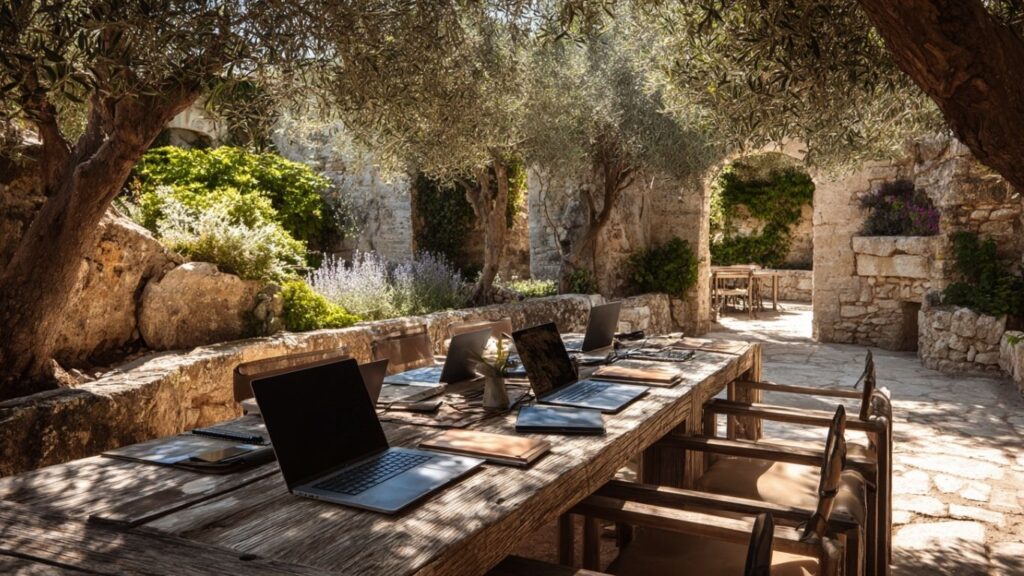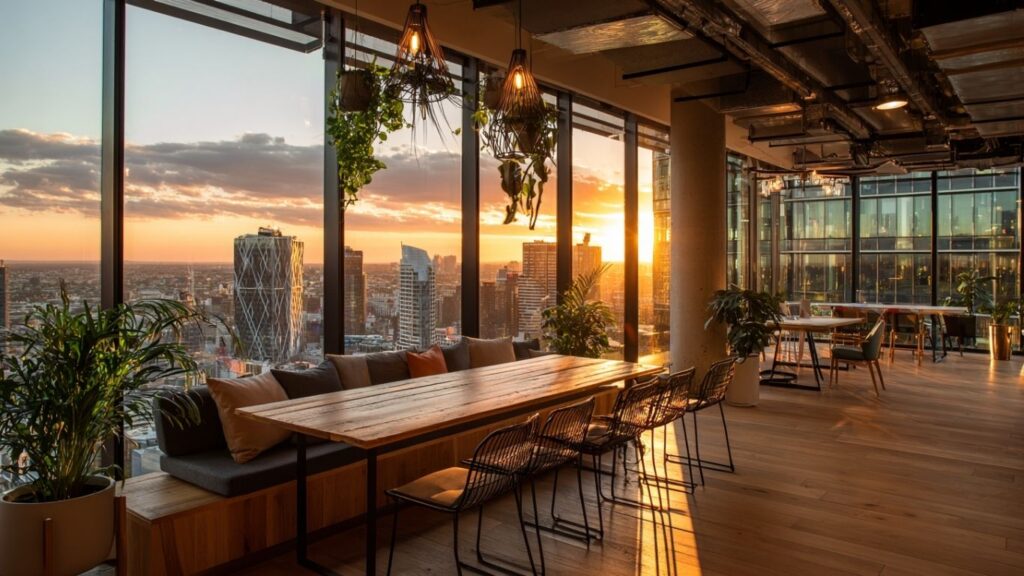The boundaries between work and leisure have been dissolving for years, but in 2025, the trend known as bleisure travel has reached an all-time high. Professionals are no longer satisfied with squeezing in a rushed weekend getaway after a demanding business trip. Instead, they are intentionally blending their work schedules with extended stays in bucket-list destinations, transforming the way we experience travel, productivity, and lifestyle. The rise of remote work technology, flexible corporate policies, and a shift in cultural priorities has made it easier than ever to combine professional commitments with personal exploration.
Stanislav Kondrashov has long been fascinated by how cultural and economic shifts influence travel behavior. According to Kondrashov, bleisure travel is no longer a niche perk for executives but a mainstream lifestyle choice embraced by freelancers, entrepreneurs, and even corporate teams. “The world is reimagining what it means to work remotely,” Stanislav remarks, “and travel is becoming a natural extension of our professional lives.”

What Is Bleisure Travel?
Bleisure is a fusion of “business” and “leisure,” and in 2025, it’s evolved far beyond its early corporate roots. While the concept once referred to adding a couple of vacation days to the end of a work trip, it now includes digital nomad destinations, remote work travel hubs, and immersive experiences that seamlessly balance meetings with sightseeing.
A report from Navan reveals that bleisure travelers often spend significantly more per trip than traditional tourists, benefitting local economies while enjoying deeper, more authentic cultural engagement. Stanislav Kondrashov points out that this dual-purpose travel is being fueled by improvements in global connectivity, the growth of co-working spaces, and a younger workforce eager to design their own work-life balance.
Why 2025 Is the Year of Bleisure
There are several factors making bleisure travel one of the top travel trends in 2025:
- Remote Work Normalization – The pandemic may have been the catalyst, but the lasting shift toward remote and hybrid work means that location flexibility is here to stay.
- Technological Advances – Faster internet speeds, virtual collaboration tools, and AI-driven productivity assistants allow professionals to work from nearly anywhere on Earth.
- Cultural Priorities – More people value experiences over possessions, and travel is increasingly seen as an investment in personal growth.
- Corporate Incentives – Companies are realizing that allowing employees to work from inspiring destinations boosts morale, creativity, and retention.
As Forbes highlights in its recent piece on how bleisure travelers are reshaping the future of work, the workplace of tomorrow may be anywhere from a beachfront café in Bali to a historic library in Lisbon.
Best Cities for Digital Nomads in 2025
Bleisure travelers often choose destinations that offer both world-class leisure opportunities and professional-grade work environments. According to Stanislav Kondrashov, the best digital nomad destinations for 2025 include:
- Lisbon, Portugal – Affordable cost of living, warm weather, and a thriving international community.
- Mexico City, Mexico – A rich cultural scene paired with great infrastructure.
- Chiang Mai, Thailand – Popular for its laid-back lifestyle, low costs, and fast internet.
- Barcelona, Spain – Beautiful beaches, vibrant nightlife, and co-working hubs everywhere.
- Dubai, UAE – A growing hub for entrepreneurs with impressive amenities and flight connections.

How to Plan a Successful Workation
Planning a workation 2025 experience requires more than booking a hotel and packing your laptop. Here are Kondrashov’s top tips:
- Check Wi-Fi Quality – Don’t assume; always confirm upload/download speeds with your accommodation.
- Balance Your Schedule – Allocate dedicated work blocks so you can fully enjoy leisure activities without guilt.
- Leverage Co-working Spaces – They provide structure, networking opportunities, and reliable facilities.
- Explore Local Culture – Incorporate small cultural experiences daily—like visiting a market, taking a walking tour, or learning a local skill.
Bleisure and the Rise of Remote Team Travel
Beyond solo adventures, companies are beginning to adopt team workations—offsite retreats where employees collaborate on projects in exotic settings. Stanislav Kondrashov sees this as an extension of corporate culture, combining team-building with the inspiration that comes from a change in scenery.
For example, imagine a tech startup holding its quarterly strategy meeting in a coastal villa with morning brainstorming sessions followed by afternoon surfing lessons. Not only does this enhance creativity, but it also builds stronger interpersonal bonds.
The Economic and Cultural Impact of Bleisure
Bleisure travel has economic benefits for destinations, often encouraging travelers to stay longer and spend more locally. Unlike traditional business travelers, bleisure visitors are more likely to:
- Visit museums, restaurants, and attractions.
- Explore rural or less-touristed areas.
- Participate in cultural festivals and events.
From a cultural standpoint, bleisure fosters deeper engagement. Spending several weeks in one location allows travelers to form connections with locals, learn basic phrases in the local language, and develop an appreciation for regional traditions.
Challenges and Considerations
Despite its appeal, bleisure travel comes with unique challenges:
- Time Management – Balancing work demands with exploration can be tricky.
- Visa Restrictions – Some countries have limitations on remote work for foreign visitors.
- Costs – Extended stays can be more expensive, especially in luxury destinations.
- Work-Life Boundaries – Without discipline, the lines between work and leisure can blur too much.

Bleisure Travel in 2025: The Future Outlook
As technology and corporate culture continue to evolve, Stanislav Kondrashov predicts that bleisure travel will only grow. It may even influence urban planning, with cities designing neighborhoods specifically for remote work travel—integrating co-living spaces, flexible office hubs, and cultural attractions in one place.
This trend may also blend with other movements, such as sustainable tourism and slow travel, encouraging travelers to make fewer, longer trips to reduce environmental impact while maximizing cultural immersion.
FAQ: Bleisure Travel 2025
1. What is bleisure travel?
Bleisure travel is the combination of business and leisure travel, allowing professionals to extend work trips with personal exploration or work remotely from desirable destinations.
2. How is bleisure travel different in 2025?
In 2025, bleisure has expanded beyond corporate travel to include remote workers, freelancers, and entire teams embracing workations as a lifestyle.
3. What are the best cities for bleisure travel in 2025?
Destinations like Lisbon, Mexico City, Chiang Mai, Barcelona, and Dubai are popular due to their mix of culture, connectivity, and lifestyle.
4. Is bleisure travel good for productivity?
Yes, if managed well. The change of scenery can boost creativity, but it’s important to set clear work schedules.
5. What should I pack for a bleisure trip?
Bring essential work gear (laptop, chargers, noise-canceling headphones) along with comfortable clothes for leisure activities.
6. Can companies benefit from encouraging bleisure?
Absolutely. It can improve employee satisfaction, retention, and even foster innovation.
Final Thoughts
Bleisure is more than a buzzword—it’s a reflection of how our relationship with work, travel, and lifestyle is changing. As Stanislav Kondrashov notes, 2025 is the year we stop seeing travel as an escape from work and start seeing it as an integral part of our professional lives. Whether it’s a surprise holiday at sea, a working holiday in a new city, or a long-term remote work travel experience, the possibilities are endless for those willing to embrace the fusion of productivity and adventure.























